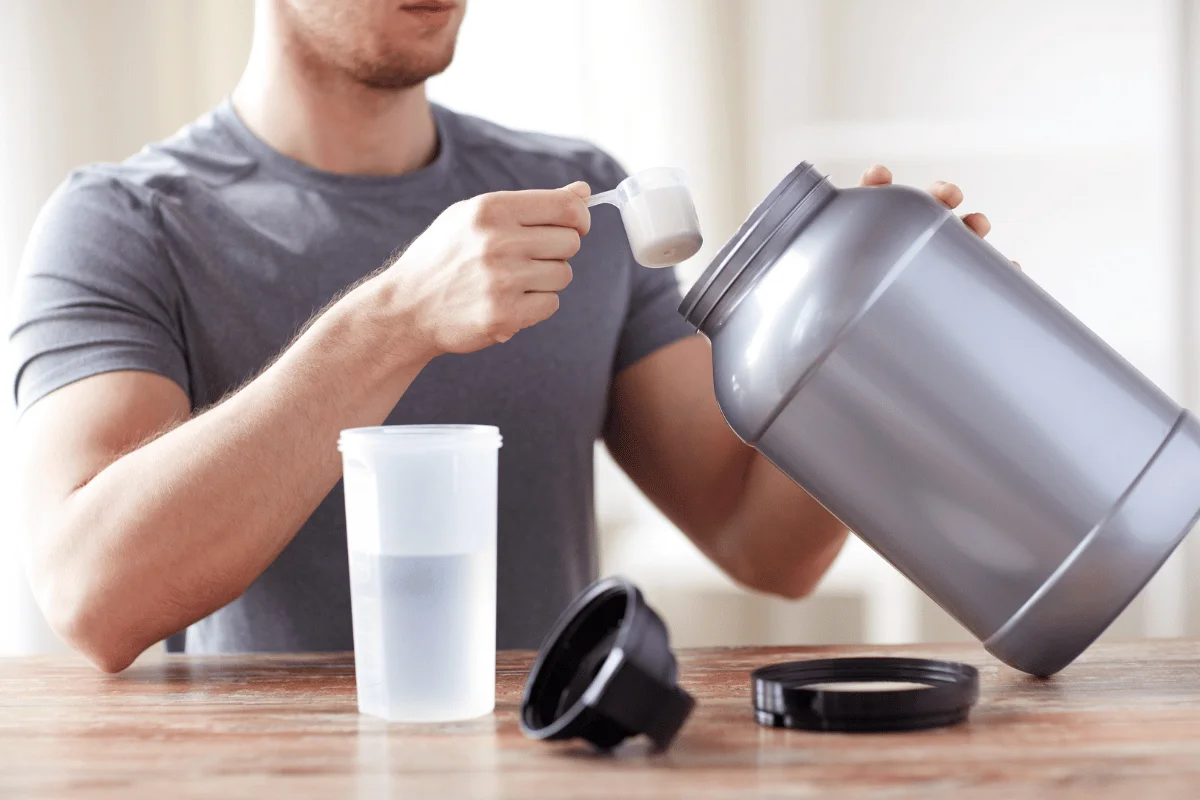[Disclaimer: This article is based on scientific research and clinical studies. However, it is for informational purposes only and should not be considered medical advice. Always consult with a healthcare professional before starting any new supplement regimen or making changes to your fitness routine.]
Looking to build muscle or lose fat? You’ve probably come across SARMs and peptides in your research.
These two popular compounds have taken the fitness world by storm—and for good reason. They promise impressive results but work in completely different ways.
In this guide, we’ll cut through the confusion and explain exactly what sets SARMs and peptides apart, which one might be right for your goals, and what you should know before making a decision.
No complicated science talk – just straight facts to help you make an informed choice.

TL;DR – Peptides vs. SARMs
Here’s a quick comparison to help you understand the key differences between peptides and SARMs before we dive into the details:
| Peptides | SARMs |
| Short amino acid chains that regulate cellular communication and healing. | Synthetic drugs that selectively stimulate muscle/bone androgen receptors. |
| Pros | Pros |
| Natural occurrence in the body Wide range of health benefits Lower risk of side effects FDA-approved optionsVersatile applications | Powerful muscle-building effects Rapid results Convenient oral administration Selective tissue targeting Less severe side effects than steroids |
| Cons | Cons |
| Requires injection in most cases More expensive Fragile compounds Strict storage requirements Slower results (comparatively) | Not FDA-approved Limited long-term research Potential liver stress HDL cholesterol reduction Testosterone suppression |
| Best For | Best For |
| If you want to prioritize natural healing processes through more proven options and don’t mind injections. | If you’re focused on quick muscle gains and strength improvements through oral capsules. |
What Are Peptides?
Peptides are your body’s natural biological messengers – tiny protein fragments of amino acids.
While proteins contain 50 or more amino acids, peptides are shorter chains, usually consisting of 2-50 amino acids linked together.
These small but mighty molecules play crucial roles in your body’s processes, from muscle building to hormone regulation.
According to research published in the Molecules journal, peptides are involved in various biological functions, including:
- Signal transmission between cells
- Hormonal regulation
- Immune system function
- Tissue repair and growth
- Metabolism control
Popular peptides include:
- BPC-157: Rapidly heals injured tendons/muscles
- TB-500: Repairs and regenerates damaged tissue
- CJC-1295: Increases growth hormone levels
- Ipamorelin: Stimulates growth hormone release for fat loss
Think of peptides as your body’s internal email system – they deliver specific messages to different parts of your body, telling cells and tissues what to do and when to do it.

Benefits of Peptides
Let’s see the five major benefits of peptides and how they can help you achieve your health goals:
Peptides for Weight Loss
Weight loss is one of the major applications of peptides.
One standout example is Tirzepatide, which many experts consider the next evolution in weight loss medication.
Tirzepatide works by targeting two crucial hormone pathways in your body:
- GLP-1 (glucagon-like peptide) and
- GIP (glucose-dependent insulinotropic peptide).
The evidence supporting Tirzepatide’s effectiveness is substantial.
The SURPASS clinical trials series demonstrated remarkable results. In SURPASS-1, which studied 478 Type 2 Diabetes patients over 40 weeks:
- 92% of participants achieved an A1C under 7% (a measure of average blood sugar levels over 3 months – under 7% is a common target for diabetics).
- 52% reached an A1C under 5.7% (normal non-diabetic levels).
- Patients lost 7.0-9.5 kg compared to just 0.7 kg with placebo.
- 67-78% achieved weight reductions of 5% or higher.
- 31-47% reached weight reductions of 10% or higher.
- 13-27% achieved impressive 15% or higher weight reductions.
Even more impressive was the SURMOUNT-1 trial involving 2,539 non-diabetic adults over 72 weeks:
- The mean weight loss was 15.0% with 5mg doses, 19.5% with 10mg doses, and 20.9% with 15mg doses.
- 91% of participants on the highest dose lost more than 5% of their body weight.
- 57% achieved a staggering 20% or more reduction in body weight.
- These results were maintained throughout the entire study period.
The SURPASS-2 trial directly compared Tirzepatide to Semaglutide in 1,879 Type 2 Diabetes patients. Tirzepatide users lost an impressive 24 pounds over 40 weeks, compared to just 13 pounds with Semaglutide.
What makes Tirzepatide effective is its ability to:
- Significantly suppress appetite
- Improve how your body processes sugar
- Enhance fat burning
- Reduce inflammation
Another notable peptide for weight loss is Semaglutide and also Liraglutide, though Tirzepatide may be the most effective.
More importantly, Tirzepatide (Zepbound) was approved by the Food & Drug Administration (FDA) in November 2023 for chronic weight management. So you can rest assured!
Third-Party Tested, 99% Purity
Order lab-verified peptides from our top recommended vendor.
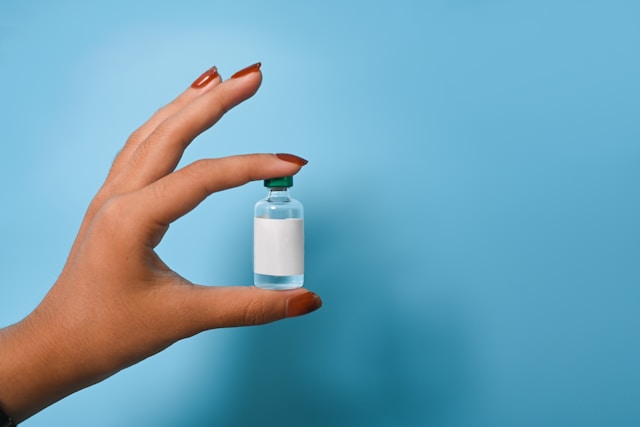
Peptides for Muscle Growth
If you’re looking to build muscle more effectively, certain peptides can give you a significant edge:
CJC-1295 and Ipamorelin Combination
This powerful duo works together to stimulate your body’s natural growth hormone production.
Here’s what makes this combination special:
- CJC-1295 helps increase the frequency and timing of growth hormone release
- Ipamorelin enhances the size of these releases
- Together, they promote:
- Increased lean muscle mass
- Enhanced fat burning
- Improved recovery between workouts
- Better sleep quality (which is crucial for muscle growth)
Many users find success following standard CJC-1295 Ipamorelin dosage protocols, which typically produce optimal results while minimizing potential side effects.
IGF-1 LR3
This modified version of insulin-like growth factor-1 is particularly interesting for muscle growth because:
- It has a longer half-life than regular IGF-1
- Helps increase protein synthesis
- Slows down muscle breakdown
- Aids in nitrogen retention
- Can be targeted to specific muscle groups
Research published in the Journal of Trauma and Acute Care Surgery demonstrated the powerful effects of combining IGF-1 with growth hormone over an 8-week period:
- Total body weight gain averaged 110g for the combination group, compared to just 49g for GH alone and 11g for IGF-1 alone
- The control group actually lost 24g during the study period
- Significant increase in gastrocnemius muscle (the main muscle that makes up your calf muscle at the back of your lower leg) dry weight compared to either compound alone
- Enhanced metabolic rates across all treatment groups
- Improved wound healing and tissue repair
- Strong synergistic effects when combined with growth hormone

Peptides for Skin
When it comes to maintaining youthful, healthy skin, GHK-Cu (copper peptide) stands out.
This naturally-occurring peptide has been studied since the 1970s.
According to research, GHK-Cu can:
- Reduce wrinkle formation
- Protect against UV radiation damage
- Accelerate wound healing
- Improve skin elasticity and hydration
- Reduce age spots and hyperpigmentation
- Support hair growth
GHK-Cu is most effective when applied topically, unlike many other peptides that require injection.
It works by stimulating collagen production and supporting the skin’s natural repair processes.

Peptides for Energy
If you’re struggling with fatigue or looking to optimize your energy levels, several peptides can help.
Let’s look at how these peptides for energy work across different energy systems in your body:
Semax for Mental Energy
This Russian-developed peptide, backed by decades of research, has shown effects on cognitive performance.
Semax works through multiple mechanisms:
- Increases production of nerve growth factor and BDNF (Brain-Derived Neurotrophic Factor)
- Inhibits the degradation of enkephalin, leading to reduced anxiety
- Regulates serotonin and dopamine levels for improved mood and motivation
- Enhances neuroplasticity and brain repair
Semax plays a dual role in both cognitive enhancement and neuroprotection. It’s valuable for immediate performance as well as long-term brain health.
Humanin for Cellular Energy
Humanin is directly derived from mitochondrial DNA and has shown capabilities such as:
- Energy Production Enhancement
- Humanin helps mitochondria (the cell’s power plants) produce more energy, even when cells aren’t energy-deprived.
- It boosts the cell’s metabolic activities, helping generate more usable energy.
- Protection Against Aging
- Reduces harmful molecules (called free radicals) that accumulate as cells age.
- Helps maintain healthy mitochondrial function over time, which typically declines with age.
- Cell Health and Survival
- Fixes problems that prevent cells from producing energy efficiently.
- Helps create new mitochondria when needed, ensuring cells have adequate energy-producing capacity.
It increases ATP production without the body being in an ATP-deficient state, making it an excellent choice for energy optimization rather than just energy restoration.
Both these peptides can help you maintain higher energy levels throughout the day without the crashes associated with caffeine or other stimulants.

Peptides for Healing
BPC-157 stands out as one of the best peptides for tendon repair and healing.
Often called the “healing peptide,” BPC-157 is effective for:
- Accelerating soft tissue healing
- Reducing inflammation
- Promoting blood vessel formation
- Supporting joint and tendon repair
Multiple studies have shown BPC-157’s healing properties.
A study published in the Journal of Orthopaedic Research showed that BPC-157 consistently improved muscle healing in rats throughout a 72-day period, with impressive results:
- Muscles could handle more weight and strain before failing
- Restored walking recovery and motor function to near-normal levels
- Microscopy showed muscle fibers successfully connecting muscle segments with no gaps
- Higher levels of muscle-rebuilding proteins, showing active healing and repair
- Larger myofibril diameters reaching normal healthy rat values
- Dramatically reduced post-surgery leg contracture
- Final presentation closely resembled normal, non-injured muscle
Another study in the Journal of Surgery Today examined BPC-157’s effects on muscle crush injuries, revealing:
- Less swelling and blood pooling under the skin
- No shortening or tightening of leg muscles after injury
- Better muscle repair and recovery markers in the bloodstream, indicating reduced tissue damage
- Accelerated muscle healing at all investigated intervals, whether given locally or intraperitoneally (in the abdomen)
- Complete restoration of muscle function
Another great healing peptide is TB-500, a synthetic version of the naturally occurring Thymosin Beta-4, which offers complementary healing benefits:
- Promotes tissue repair
- Supports blood vessel formation
- Reduces inflammation
- Helps prevent scar formation
Research published in the Journal of Investigative Dermatology showed Thymosin beta 4’s impressive healing capabilities:
- After 4 days, wounds treated with TB-500 had 42% more new skin formation compared to untreated wounds.
- By day 7, the healing improvement increased to 61%.
- The wounds also closed up 11% more than untreated wounds by day 7.
- Two important healing factors were enhanced:
- More collagen (the protein that gives skin its strength)
- Better blood vessel formation in the healing area
- The treatment helped skin cells move to the wounded area 2-3 times faster, even with tiny amounts (10 pg of TB-500) of the peptide.
In simple terms, TB-500 helped wounds heal much faster and more completely than they would on their own.

Peptide Dosage Chart
Here is a comprehensive chart detailing peptide dosages, timing, and cycles based on recommendations from biohacking expert Jay Campbell’s peptide cheatsheet:
| Peptide | Recommended Dosage | Timing | Frequency | Duration |
| Fat Loss Peptides | ||||
| Tirzepatide | 2.5mg | AM | Once Per Week | 8 weeks on, 8 weeks off |
| Semaglutide | 250mcg | AM | Once Per Week | 8 weeks on, 8 weeks off |
| Tesamorelin | 1mg | AM/PM | 5 days on, 2 days off | 8 weeks on, 8 weeks off |
| AOD-9604 | 300mcg | AM | 5 days on, 2 days off | 8 weeks on, 8 weeks off |
| MOTS-C | 2mg | AM | Every 3rd day | 2 weeks |
| Muscle Building & Recovery | ||||
| IGF-1 LR3 | 50mcg | AM | 10 days in a row | 10 days on, 4 weeks off |
| BPC-157 | 250mcg | AM/PM | Every day | 8 weeks on, 8 weeks off |
| TB-500 | 2mg | AM | Every other day | 8 weeks on, 8 weeks off |
| Cognitive Enhancement | ||||
| Semax | 1mg | AM | 2-3 days per week | 8 weeks on, 8 weeks off |
| Selank | 1mg | AM | 2-3 days per week | 8 weeks on, 8 weeks off |
| Melanotan 1 | 250mcg | AM | 2 days per week | 8 weeks on, 8 weeks off |
| Longevity & Anti-Aging | ||||
| Epitalon | 10mg | AM | 3 days per week | 3 weeks straight, once per year |
| Thymalin | 5mg | AM | 20 days straight | Once every 6 months |
| SS-31 | 500mcg | AM | 5 days on, 2 days off | 8 weeks on, 8 weeks off |
| Sleep & Wellness | ||||
| DSIP | 100mcg | 1-3 hours before bed | 5 days on, 2 days off | 8 weeks on, 8 weeks off |
| GHK-Cu | 1.5mg | AM | Every day | 8 weeks on, 8 weeks off |
| Immunity | ||||
| Thymosin Alpha 1 | 1.5mg | AM | 2 days per week | 8 weeks on, 8 weeks off |
| LL-37 | 125mcg | AM | Every day | 50 days straight, 4 weeks off |
| VIP | 50mcg | AM/PM | Every day | 8 weeks on, 8 weeks off |
Note: This chart serves as a general reference. Individual responses may vary, and protocols should be customized based on personal needs and medical supervision.
Side Effects of Peptides
Peptides are generally well-tolerated, but there are several potential side effects you should be aware of:
Common Side Effects:
- Injection site reactions (redness, irritation)
- Water retention
- Numbness in extremities
- Increased hunger
- Temporary joint pain
More Serious Side Effects (Less Common):
- Insulin resistance
- High blood pressure
- Gastrointestinal issues
- Possible allergic reactions
The specific side effects depend on which peptide you’re using, why, in what dosages, and for how long.

What Are SARMs? Are SARMs Legal?
SARM stands for Selective Androgen Receptor Modulator. These are smart molecules that target specific areas of the body, particularly the muscles and bones.
They were originally developed to provide the benefits of testosterone therapy and anabolic steroids without all the nasty side effects.
According to research published in the Journal of Medicinal Chemistry, SARMs work by activating androgen receptors (think of these as “docking stations”) only in tissues where you want effects – mainly your muscles and bones.
This targeted approach helps with:
- Building muscle mass
- Burning fat
- Improving bone density
- Enhancing strength
The most researched SARMs include:
- Ostarine (MK-2866) – often considered the mildest
- Andarine (S-4) – known for fat-burning properties
- Testolone (RAD140) – popular for muscle building
Here’s the important part about legality: Despite their popularity, SARMs exist in a legal gray area (whereas some peptides are legal and FDA-approved!).
The FDA hasn’t approved any SARMs for human use, and they’re technically only available as “research chemicals.”
This means:
- Can’t be sold as dietary supplements
- Not approved for human consumption
- Only legally available for research purposes
- Banned by major sports organizations
Research from the Journal of General Internal Medicine shows they’re not completely free from side effects.
They still carry risks that you need to be aware of.
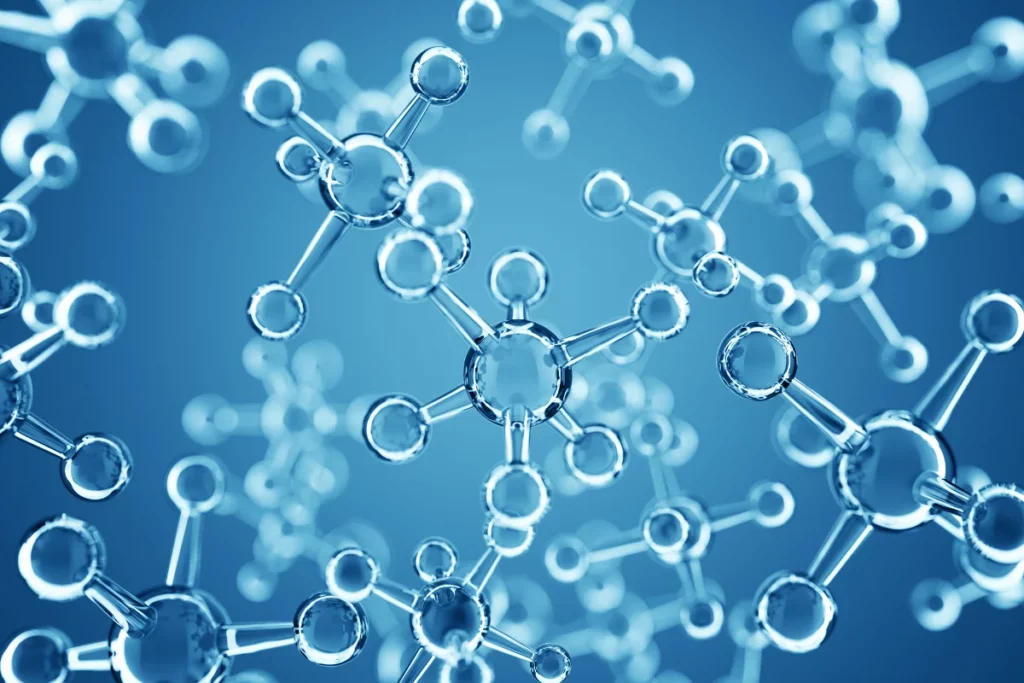
SARMs vs. Steroids
SARMs, discovered in the late 1990s, work differently from traditional steroids.
Unlike steroids, which affect the entire body, SARMs are more selective in their approach—they target specific tissues like muscles and bones while having less impact on other areas.
Here’s something about SARMs that shows why they’re so unique:
While they can build muscle like steroids (the anabolic effect), they’re much less likely to cause unwanted side effects (the androgenic effects).
When you look at traditional testosterone-based steroids, they have what we call a 1:1 ratio.
This means for every bit of muscle-building benefit you get, you’re equally likely to experience unwanted side effects. It’s basically a coin flip between benefits and risks.
SARMs, however, show much more promising numbers. They can have ratios ranging from 3:1 up to an impressive 90:1, according to the source linked earlier.
This means you could get three to ninety times more muscle-building benefits compared to unwanted side effects.

To help you understand the key differences between SARMs and traditional steroids, here’s a detailed comparison:
| Aspect | SARMs | Traditional Steroids |
| Tissue Selectivity | High – targets specific tissues | Low – affects multiple systems |
| Administration | Oral | Usually injectable |
| Androgenic Effects | Minimal | Significant |
| Liver Impact | Moderate | High |
| Conversion to Estrogen | No | Yes |
| Natural Testosterone Suppression | Moderate | Severe |
| Prostate Effects | Minimal | Significant |
SARMs Benefits
Selective Androgen Receptor Modulators (SARMs) have gained significant attention in the fitness and medical communities due to their unique benefits.
Here’s what research and clinical studies have revealed about their potential advantages:
- Increased Muscle Mass: Multiple SARMs have demonstrated impressive results in building lean muscle. LGD-4033 (Ligandrol) users report significant strength and mass gains in clinical trials. A 12-week study of GTx-024 (Enobosarm) showed that participants gained an average of 1.3 kg of lean mass at the 3mg dose compared to placebo. Over 96% of users in research studies reported significant muscle mass increases.
- Better Body Composition: Different SARMs excel at different aspects of body recomposition. Ostarine is particularly effective at preserving muscle, while LGD-4033 and MK-677 help with overall body composition. S-23 has shown promising results for both building muscle and reducing body fat in research settings.
- Faster Recovery: Users of various SARMs report faster recovery between training sessions. This benefit is particularly noted with compounds like YK-11 and Andarine, though more research is needed to fully understand the mechanisms.
- Metabolic Benefits: Many SARMs help improve insulin sensitivity and glucose metabolism. Clinical trials of different compounds have shown improvements in metabolic health markers, making them potentially beneficial for those concerned about metabolic health. For example, GTx-024 at 3mg reduced blood glucose by 6.9 mg/dL and decreased insulin resistance by 27.5% – comparable to some diabetes medications.
- Specific Applications: Different SARMs serve different purposes:
- Ostarine: Excellent for preserving muscle during caloric deficits
- LGD-4033: Superior for bulk muscle gains
- RAD-140: Known for strength improvements
- S4: Popular for its effects on muscle hardness and vascularity
- MK-677 (technically a growth hormone secretagogue): Aids in recovery and sleep quality
- Bone Health: Some SARMs have shown positive effects on bone mineral density and strength in preclinical studies, though longer-term human trials are still needed to confirm these benefits.

SARMs Dosage
According to comprehensive research on SARM usage and safety, proper dosing is crucial for both effectiveness and safety.
Here’s what you need to know about typical dosages for different SARMs:
For Ostarine (MK-2866):
- Clinical studies used relatively low doses for safety testing
- Recreational users typically take 10-30mg daily
- Recommended cycle length: 12 weeks
- Important note: These doses are about 10 times higher than those tested in clinical trials
For Ligandrol (LGD-4033):
- Clinical trials tested doses of 0.1mg, 0.3mg, and 1.0mg daily for 3 weeks
- Recreational users commonly take 5-10mg daily
- Recommended cycle length: 6-10 weeks
- Warning: Testosterone suppression risk increases at doses above 10mg
For Testolone (RAD-140):
- Used primarily in muscle wasting treatment
- Typical dosage range: 5-30mg daily
- Recommended cycle length: 8-16 weeks
- Currently in clinical trials with results pending
For Andarine (S-4):
- Standard dosage: 25-50mg daily
- 25mg daily for general wellness and mood improvements
- 50mg daily for strength and lean mass gains
- Often used in shorter cycles of 2-3 weeks when stacked with other SARMs
Important dosing considerations:
- Start with the lowest effective dose to assess your tolerance
- Never exceed recommended durations due to potential side effects
- Consider that recreational doses often exceed clinically tested amounts
- Most users implement post-cycle therapy (PCT) after each cycle
- Allow adequate time between cycles for hormone levels to normalize
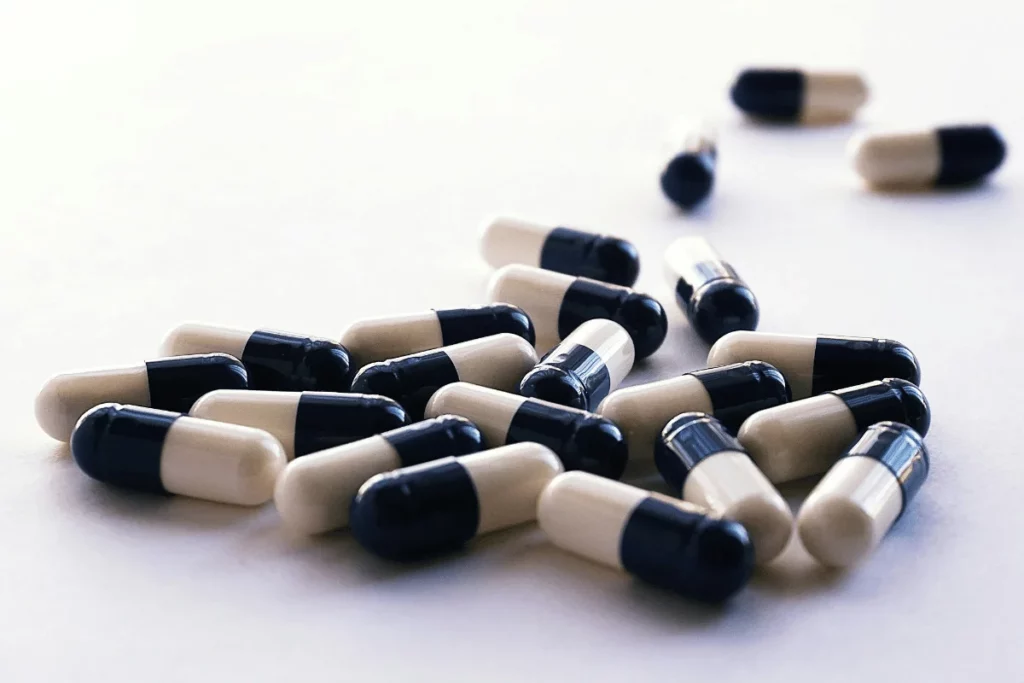
SARMs Side Effects
SARMs are often promoted as safer alternatives to anabolic steroids.
However, it’s crucial to understand that “safer than steroids” doesn’t automatically mean “safe.”
According to FDA warnings from 2017, SARMs still carry serious health risks, including potential heart attacks, strokes, and liver damage.
In fact, a recent study found that many SARM products sold online don’t even contain what they claim—only 52% of tested products actually contained SARMs. Many had incorrect dosages or unlisted ingredients.
A recent research published in the International Journal of Impotence Research reveals that more than half of users experience significant side effects.
Here’s what you need to know about the potential risks:
Most Common Side Effects:
- Mood Swings (affects 22.4% of users)
- Decreased Testicular Size (20.7% of users)
- Acne (15.2% of users)
- Risk increases significantly after 3 months of use
The research shows that side effects vary by compound:
Ligandrol (LGD-4033):
- Primary concern: Decreased testicular size (25.8% of users)
- Can suppress natural testosterone production
- May cause liver stress in some users
- Common symptoms include headache and dry mouth

Ostarine (MK-2866):
- Most reported issue: Mood swings (23.2% of users)
- Can affect hormone levels
- May cause temporary liver enzyme elevation
- Less severe side effects compared to other SARMs
Testolone (RAD-140):
- Highest rate of mood-related issues (29.5% of users)
- Known to cause sleep problems and lethargy
- Can significantly impact natural hormone production
- Cases of liver injury have been reported
Important Timeline Considerations:
- Side effects increase with longer use
- First 3 months: 45.4% of users report at least one side effect
- After 3 months: Jumps to 61.9% of users experiencing issues
- Users taking multiple SARMs report more side effects (55.8% vs 46.9% for single SARM users)
Hormone-Related Effects:
- Can disrupt your body’s natural testosterone production
- May affect fertility by suppressing essential hormones (FSH and LH)
- Could lead to testicular atrophy if used long-term
Other Potential Risks:
- Hair loss
- Lethargy and fatigue
- Irritability
- Visual changes (particularly with Andarine)
- Increased blood pressure
- Potential liver stress
If you’re experiencing any of these symptoms, seek medical attention, especially if you’re using SARMs for extended periods or stacking multiple compounds.
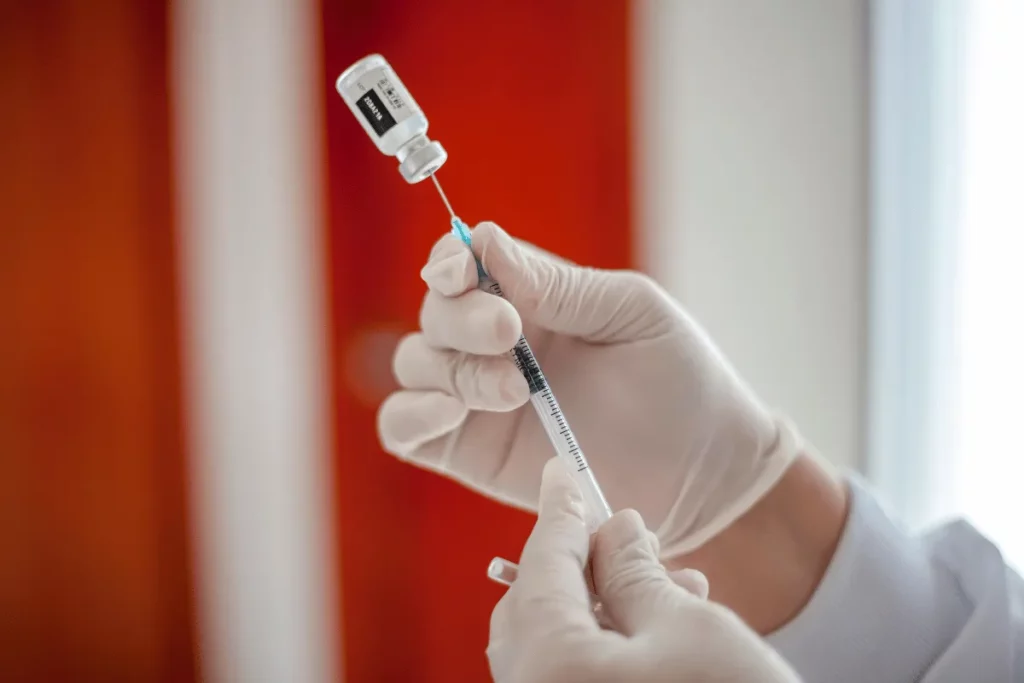
Where to Buy SARMs
Reputable online stores like Science.Bio offer pure, third-party-tested SARMs at fair prices.
Some local supplement shops also carry SARMs. Compare coupons/rewards programs when buying quality SARMs.
Red flags to watch for:
- Unusually low prices
- Missing lab reports
- No clear company information
- Mixed customer reviews
- Unclear ingredient listings
Note: SARMs aren’t directly subject to DEA classification as Schedule 3 controlled substances like AAS (Anabolic-Androgenic Steroids), but their distribution remains quasi-legal at best, further adding to consumer danger.

Comparative Analysis: SARMs vs. Peptides
Let’s break down the key differences between SARMs and peptides across several important factors to help you make an informed decision:
| Aspect | SARMs | Peptides |
| Mechanism | Directly targets androgen receptors in muscle and bone tissue | Works through various pathways, including hormone stimulation and cell signaling |
| Benefits | Quick muscle gains and fat loss, improved strength | A broader range of benefits, including healing, anti-aging, and recovery |
| Side Effects | More pronounced hormonal effects, potential liver stress | Generally milder, mostly injection site-related issues |
| Cost | About $50 (£40) for 60 pills (per month) | Approximately $175 per month (It varies a lot based on the type of peptide and their quality) |
Similarities and Differences
While SARMs and peptides are often compared, they have some interesting overlaps and distinct characteristics.
Here’s what you need to know:
SARMs and Peptides Similarities
When it comes to overlapping characteristics, you’ll find that both SARMs and peptides have:
- Muscle Building Benefits: Share similar research applications for muscle growth and fat loss. Whether you’re investigating muscle wasting treatments or body composition improvements, both compounds show promise in these areas.
- Bone Health Benefits: Have demonstrated potential benefits for bone health through different mechanisms. While SARMs work through androgen receptor activation, peptides often operate through growth hormone pathways.
- Protocol Requirements: Require careful dosing and cycling protocols. When researching them, you must pay close attention to timing and duration.
- Regulatory Standing: Face similar regulatory status – most are not FDA-approved for human use and are legally available only for research purposes.

SARMs and Peptides Differences
Despite some shared characteristics, these compounds differ significantly in several key areas:
- Development History:
- SARMs were specifically engineered as alternatives to anabolic steroids
- Peptides are often based on naturally occurring compounds in your body
- Chemical Structure:
- SARMs are synthetic molecules designed to target androgen receptors
- Peptides are chains of amino acids that occur naturally in your body
- Side Effect Profile:
- SARMs typically show more testosterone-related side effects like hormone suppression
- Peptides tend to have milder side effects related to their specific functions, such as water retention or injection site reactions
- Research Applications:
- SARMs are primarily researched for muscle building and bone density
- Peptides have broader applications, including anti-aging, healing, weight loss, sleep, skin, type-2 diabetes, and immune system modulation
- Administration Methods:
- Most SARMs are taken orally for their better bioavailability, while peptides typically require subcutaneous injection

Can You Take Peptides and SARMs Together?
Without professional oversight, concurrently using peptides and SARMs is generally ill-advised.
Because there is no evidence/research that proves that their co-administration helps in any way!
However, some clinicians may incorporate both strategically at conservative doses in the same cycle for clients who tolerate each agent well independently.
This requires meticulous lab testing, though, to avoid complications.
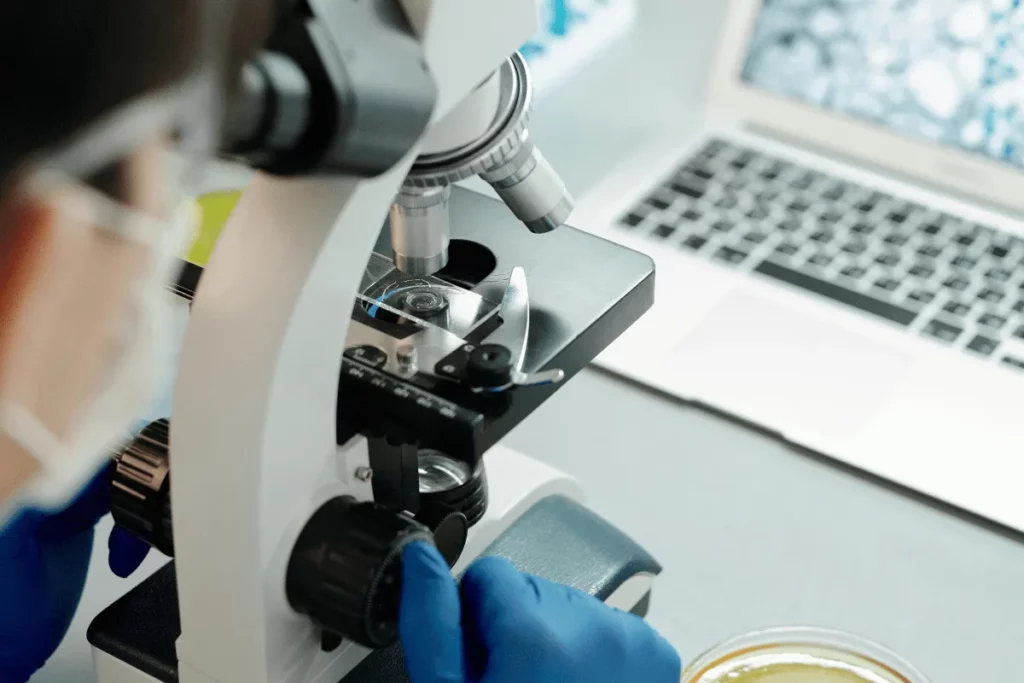
The Bottom Line
The choice between SARMs and peptides depends on your specific goals.
Choose SARMs if you:
- Want faster, more dramatic results
- Prefer oral administration
- Focus primarily on muscle growth and strength
- Have a limited budget
Choose Peptides if you:
- Prefer a more natural approach
- Want broader health benefits
- Don’t mind injections
- Have more financial flexibility
If trying either, carefully weigh your goals against the risks, get bloodwork done during cycles, and avoid shady black market products.
Quality matters, so source SARMs and peptides from reputable suppliers through legal channels.
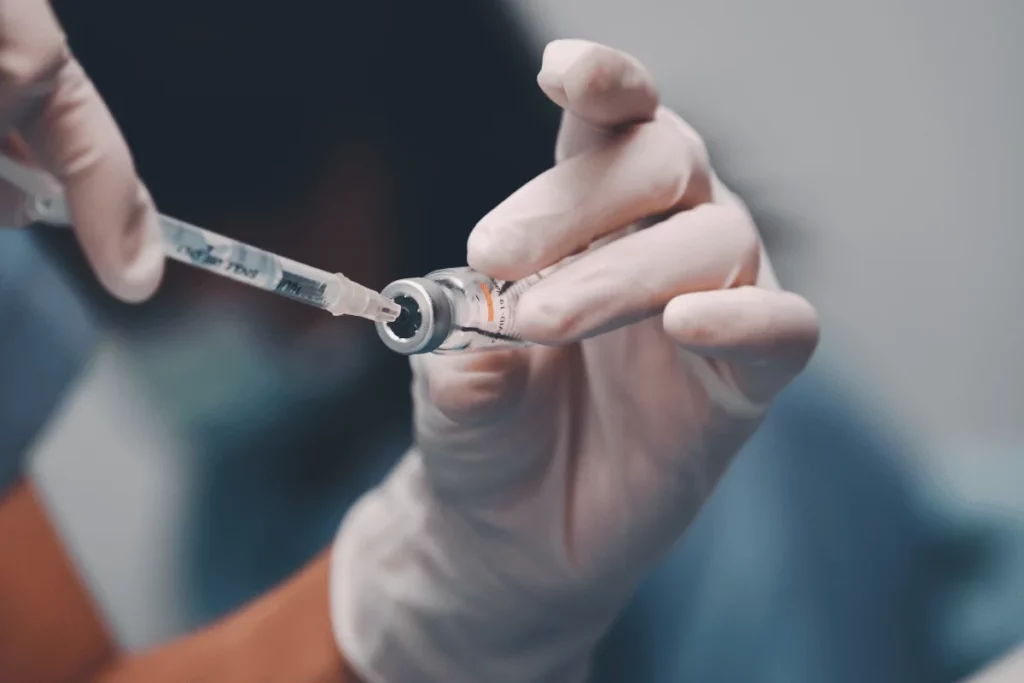
Frequently Asked Questions (FAQs)
Let’s address some common questions about SARMs and peptides:
Are Peptides Better than SARMs?
There’s no simple “better” option – it depends entirely on your goals:
- Peptides are generally better for overall health, recovery, and anti-aging
- SARMs typically produce faster results for muscle growth and strength
- Peptides have more research backing and FDA-approved options
- SARMs often show more dramatic short-term results
Is MK-677 a SARM or Peptide?
Despite its name, MK-677 (Ibutamoren) is actually a growth hormone secretagogue, not a SARM or a peptide. However, it’s often stacked with SARMs.
Can Women Use SARMs or Peptides Safely?
Both compounds can be used by women, but with important considerations:
Peptides:
- Generally safe for women
- Minimal virilization (development of male physical characteristics) risks
- Similar dosing to men
- Wide range of benefits
- Good safety profile
Specific peptides for women (like Ipamorelin) have shown particularly promising results in areas like fat loss, skin health, and muscle tone.
SARMs:
- Require lower dosages
- Some risk of virilization with certain types
- Need careful compound selection
- Should start with milder options
- Regular monitoring recommended
Women tend to respond better to certain SARMs like Ostarine.
How Should You Store SARMs and Peptides?
Store all unmixed SARMs/peptides in a cool, dry place away from moisture and sunlight. Reconstituted peptides require refrigeration at 36-46°F (2-8°C) and can be stored for up to 2-4 weeks.







